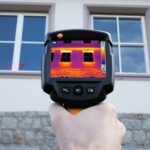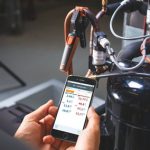Schools are the cornerstone of many communities. Everyday in towns and cities across Australia, parents send their children to school with a packed lunch and hopefully a desire to learn.
However, in schools around the country, indoor air quality should be a primary focus as it’s something that could be a source of problems for our most vulnerable.
According to the Department of the Environment, Australians spend 90 per cent or more of their time indoors. This percentage often rises during bad weather or exam time where school students could be inside school buildings from the start to the end of the day.
As many Australian schools use ventilation systems, this potentially puts students at risk from carbon dioxide. A number of these systems are ageing and many may not work as well as they initially did.
What is carbon dioxide (CO2)?
The naturally-produced atmospheric gas is often heavily produced by vehicles an industrial areas. However, humans expel it naturally, thus requiring buildings to have appropriate ventilation systems to cycle the air.
Carbon dioxide is measured in parts per million (ppm) and has a unique affect on people. The reference range is around 700 to 1,500 ppm, but the limit can reach 5,000 ppm before serious harm can be done. However, if the levels reach above 1,000 ppm, students are less likely to be alert in class, will be more tired and unable to concentration for long periods of time – all problems in a classroom environment.
Ground-breaking research
This premise was backed up by a 2012 study at the Department of Energy’s Lawrence Berkeley National Laboratory in the US. Across nine different scales of decision-making performance points, test subjects showed reductions on six when the CO2 level was increased to 1,000 ppm. At 2,500 ppm, even greater failures were recorded on seven scales.
Berkeley Lab scientist Mark Mendell said the ability to ‘take initiative’ and ‘think strategically’ were most affected by the raised carbon dioxide levels.
“Previous studies have looked at 10,000 ppm, 20,000 ppm; that’s the level at which scientists thought effects started,” he explained in a 2012 Berkeley Lab article.
“That’s why these findings are so startling.”
Solutions
One solution for school principals is to have regular maintenance and checks performed by professionals. By using the testo 535 Versatile CO2 Measurement tool, technicians can view accurate and reliable CO2 figures and discover if there is a problem.
This can then be solved in a timely manner and school children can continue to learn in a healthy environment.









 Reduce cooking oil costs while ensuring quality
Reduce cooking oil costs while ensuring quality Expert knowledge on CO2 monitoring
Expert knowledge on CO2 monitoring Refrigeration knowledge - in 3 modules
Refrigeration knowledge - in 3 modules



